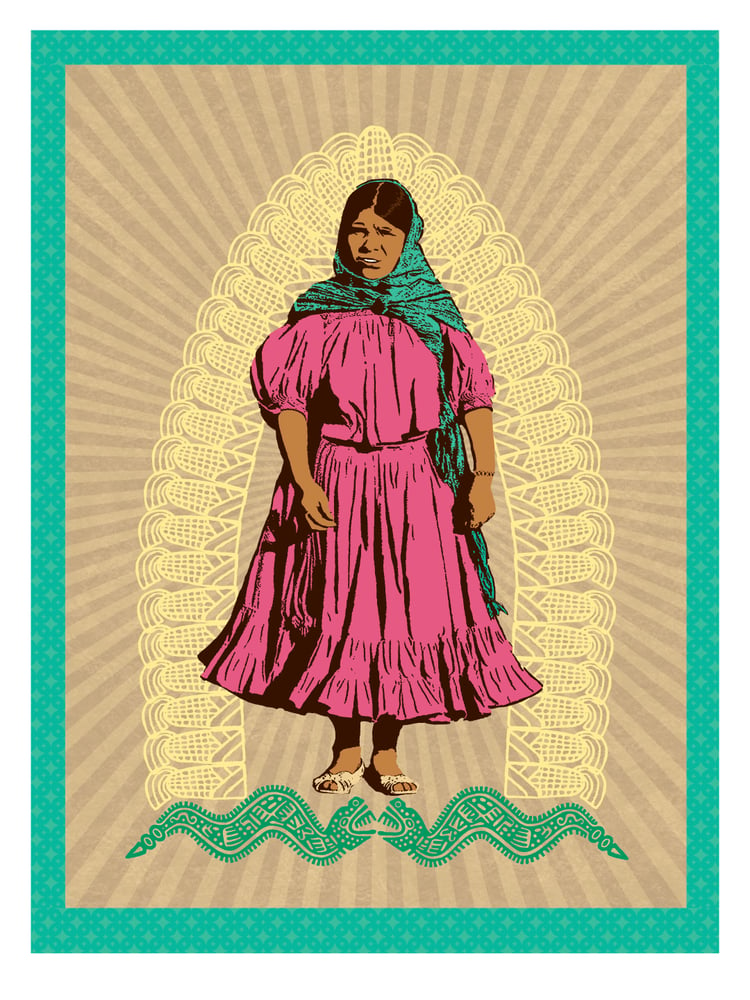Officials in central Mexico announced that due to Covid restrictions, the annual December pilgrimage to the shrine of La Virgen de Guadalupe will be canceled.
Bishop Salvador Martínez, rector at the Basilica de Guadalupe, recently said as many as 15 million pilgrims – many on foot – travel to the shrine during the first two weeks of December.
The Guadalupe pilgrimage is one of the largest in the world – even larger than the pilgrimage to Mecca.

Locally, in Pueblo, the annual December 12th Guadalupe procession and mass at Our Lady of Mt. Carmel will be moved online.
Deacon Juan Manuel said three masses in honor of Guadalupe will be held on Facebook at 7pm on December 10th , 11th and 12th. Deacon Manuel said updates to the online events will be posted on the Our Lady of Mt. Carmel Facebook page.
Despite Covid, on Dia de La Virgen de Guadalupe devout followers across the Americas will find ways to honor Guadalupe with prayer and reflection.

La Virgen de Guadalupe is a figure that has transcended religion to become a rock-star like cultural icon and one of the most recognized symbols in the world.
Who is La Virgen de Guadalupe and how did she become such an influential figure?
Tonantzin, Juan Diego and the Apparition
The common story begins, in 1531, only 15 years after the fall of Tenochtitlan – the Aztec Capital.
At the top of Mount Tepeyac, with a smallpox pandemic raging across the Americas, Guadalupe appeared to an Aztec named Cuauhtlatoatzin. His Christianized name was Juan Diego.
Guadalupe spoke to Juan Diego in his native Aztec language – Nahuatl – instructing him to build a temple in her honor on that very spot.


That very spot – Mount Tepeyac – is precisely where the indigenous goddess Tonantzin had been worshiped for over a 1000 years, explains Dr. Yolanda Broyles-González, University Distinguished Professor and Head of American Ethnic Studies at Kansas State University.
“Tonantzin (meaning Our Blessed Mother Earth) is one of many manifestations of the Divine Feminine, a central feature of Native American spirituality,” says Dr. Broyles-González.


On Juan Diego’s third visit to Mount Tepeyac, Guadalupe gave him roses wrapped in a cloak and instructed him to take the flowers to the bishop.
As the bishop unwrapped the flowers that Juan Diego presented, the iconic image of La Virgen de Guadalupe miraculously appeared on the cloak.
After the miracle, a basilica was eventually built at Mount Tepeyac.
The Basilica of Guadalupe stands today as one of the most visited sacred sites in the world and the second most visited church in the world – the first is St. Peter’s Cathedral.
The Age of Tonantzin
According to Dr. Broyles-González, the Catholic establishment remained suspicious of Guadalupe’s worship for generations.
In the 16th century, the Catholic Franciscans worried that indigenous converts were using Guadalupe as a vehicle to maintain their native spiritual practices by worshiping Tonantzin, which the Spanish had outlawed.
Likewise, by many accounts, Juan Diego was not a simple commoner as the original story claims. Dr. Broyles-González noted Diego was an established native spiritual leader as indicated by his Aztec name – Cuauhtlatoatzin, which means one who speaks with eagles.
“The Catholic church sensed that the natives wanted to restore the divine feminine as central. The church opposed the building of Guadalupe’s temple for over a 100 years,” says Dr. Broyles-González
Her Image Lives On
Nevertheless, the vision of Guadalupe stands as a significant point in the story of colonization in the Americas.
The brown, Aztec language speaking Guadalupe became a symbol of hope for the indigenous masses who were enduring oppressive violence, a pandemic and even slavery under Spanish rule.
Many continue to ponder if the unparalleled devotion to Guadalupe can be explained through a Tonantzin continuum. According to Dr. Broyles-González, to this day, devout followers refer to her as Guadalupe-Tonantzin.
“As an expression of Tonantzin (Our Blessed Mother Earth) Guadalupe provides us with nurturance, hope, protection, and miracles. She is an Earth Mother who nurtures our spirits,” says Dr. Broyles-González

For generations across Mexico and the Southwestern US, the story and image of Guadalupe-Tonantzin has offered communities a sense of belonging that was often missing in the larger social and political environment.
Her image is a reference to a reality that many Mexican/ Mexican American/Chinanx communities have been living, honoring and surviving in these lands for hundreds and even thousands of years.
This December 12th 2020, we’ll honor Guadalupe-Tonantzin, a symbol of hope and justice during a time in need of just that. ▲
Buena writer Matthew Garcia can be reached at buena@somosbuena.com








